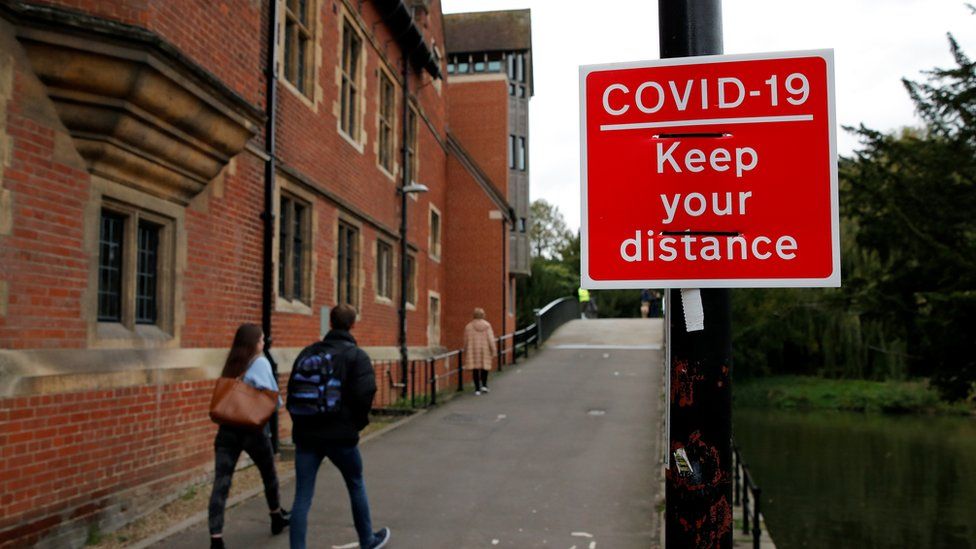
The Covid epidemic in England is growing – with much of the growth being driven by younger age groups not yet immunised, a study suggests.
The analysis, from the React-1 study, looked at the period 20 May to 7 June.
But tentative signs in the latest daily data suggest growth may be beginning to slow.
The rollout of jabs to younger people is key to reducing further spread, researchers from Imperial College London say.
The team, which since last year has been inviting a representative sample of the population to take Covid swab tests, found:
- of the 108,911 people tested, 135 were positive – a rise from 0.1% to 0.15%
- most cases were among five- to 12-year-olds and 18- to 24-year-olds
- the reproduction (R) number, of people the average infected person would infect, was an estimated 1.44
The analysis also suggests a strengthening link between cases and hospital admissions, which scientists say is mostly driven by younger people not yet vaccinated.
But Prof Paul Elliot, who directs the study, said: “We can take quite a lot of comfort from the fact that when we look in the details, it does appear that there is very, very good protection in the older ages, where there is virtually everyone double vaccinated.
“The government has clearly announced that they want to vaccinate all adults in the period between now and 19 July .
“That will make a very big difference and increase the total amount of population immunity.”

Daily data and positive signs?

The picture presented by React is one from 10 days ago – but if we look at the daily figures published by the government, there are some encouraging signs, albeit it very tentative.
Last week, cases appeared to be doubling every 10 days – but this week, that has slowed to something like 14 days.
It still means the epidemic is growing – but it is the first sign of a flattening of cases.
Although, this, of course, could be a false dawn.
The rise in infections has largely been driven by the North West – the top 20 local-authority areas with the highest rates are all in that region.
And infections could easily take off in other areas, speeding up the growth of this wave.
But if this slowing of growth holds, it is very positive.
Government scientists had feared rapid growth right up to 19 July.
And this would drive up hospital admissions, albeit, because of the vaccines, at a lower rate than in previous waves.
But, although it is still early days, the data is now a little more encouraging than a week ago.


- LOOK-UP TOOL: How many cases in your area?
- SYMPTOMS: What are they and how to guard against them?
- YOUR QUESTIONS: We answer your queries
- GLOBAL SPREAD: How many worldwide cases are there?
- TREATMENTS: What progress are we making to help people?


- WHY HAS TWITTER BEEN BANNED IN NIGERIA?: If You Don’t Know investigates
- “MY LIFE WAS ON PAUSE BEHIND THE SCENES”: Mark Feehily opens up about coming out to the world

